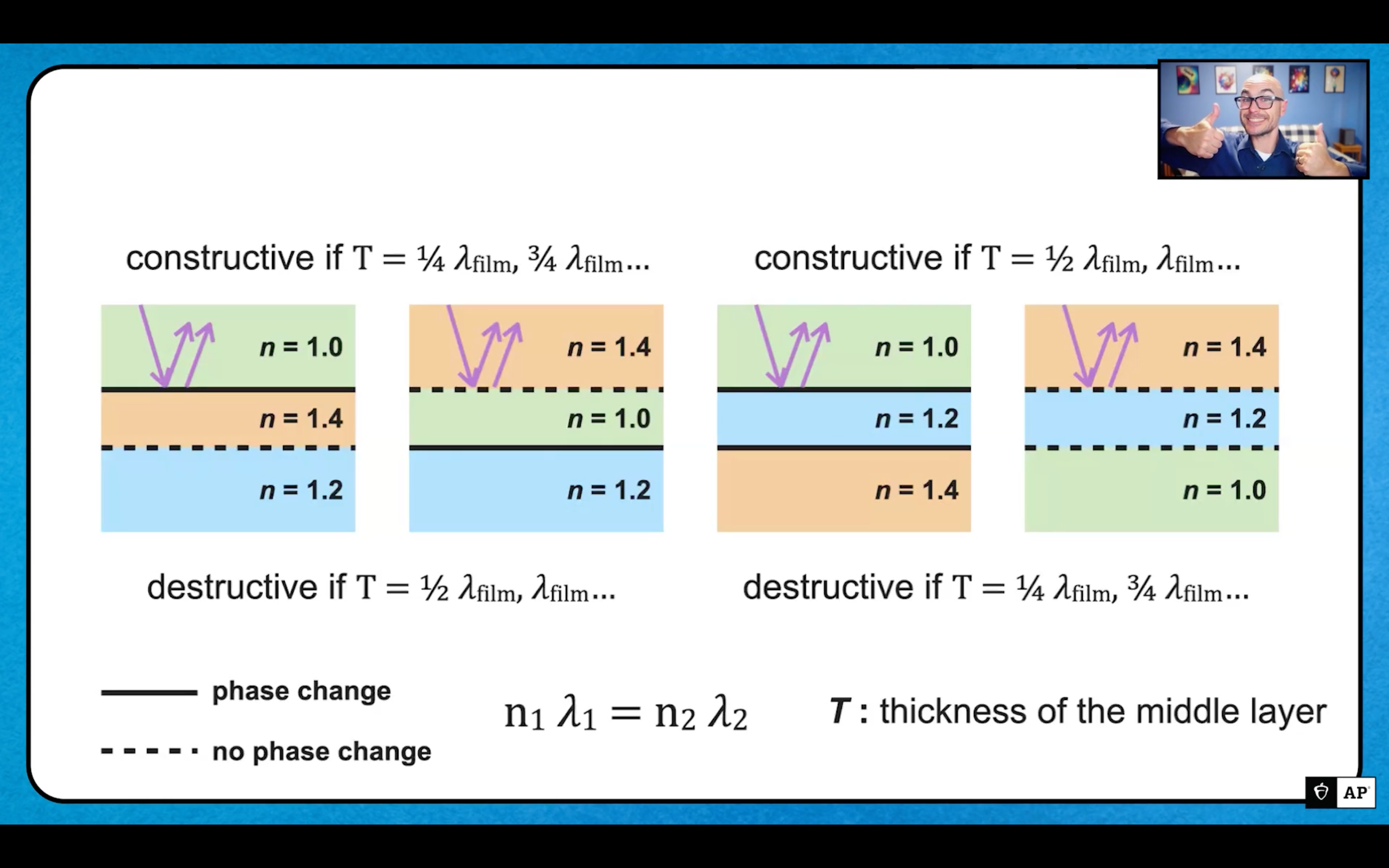Thin-film interference is when rays reflect off the outer surface of a thin material and then also reflect off the inner surface of the material, which causes some wavelengths to appear brighter or dimmer. Thin-film interference mostly occurs when the object that light is interfering through is roughly 10x or 0.1x thicker than the light’s wavelength.
Wave phases measure how to waves line up. Waves that are in phrase have their crests line up, which means they interfere constructively. Conversely, waves that are out of phase will have crests and troughs line up so they interfere destructively.
 |  Ray is 180 degrees out of phase |
|---|---|
 |  |
| From 14.3 — Boundary Behaviour of Waves and Polarization, we know that light traveling from one medium to another leads to either transmission, reflection, or absorption. In this process, the reflected ray may undergo a phase change: |
- If , then the reflected ray is in phase
- If , then the reflected ray is 180 degrees out of phase
When light passes through a thin layer (called a film) of material with a thickness roughly equal to the light’s wavelength, some interference occurs between the reflected rays. The amount of constructive and destructive interference depends on the relationship between the thickness of the film and the wavelength of the light.
Similar to Snell’s Law from 13.3 — Refraction, we have the formula: which we can use to derive wavelengths or indices when given three known variables.
